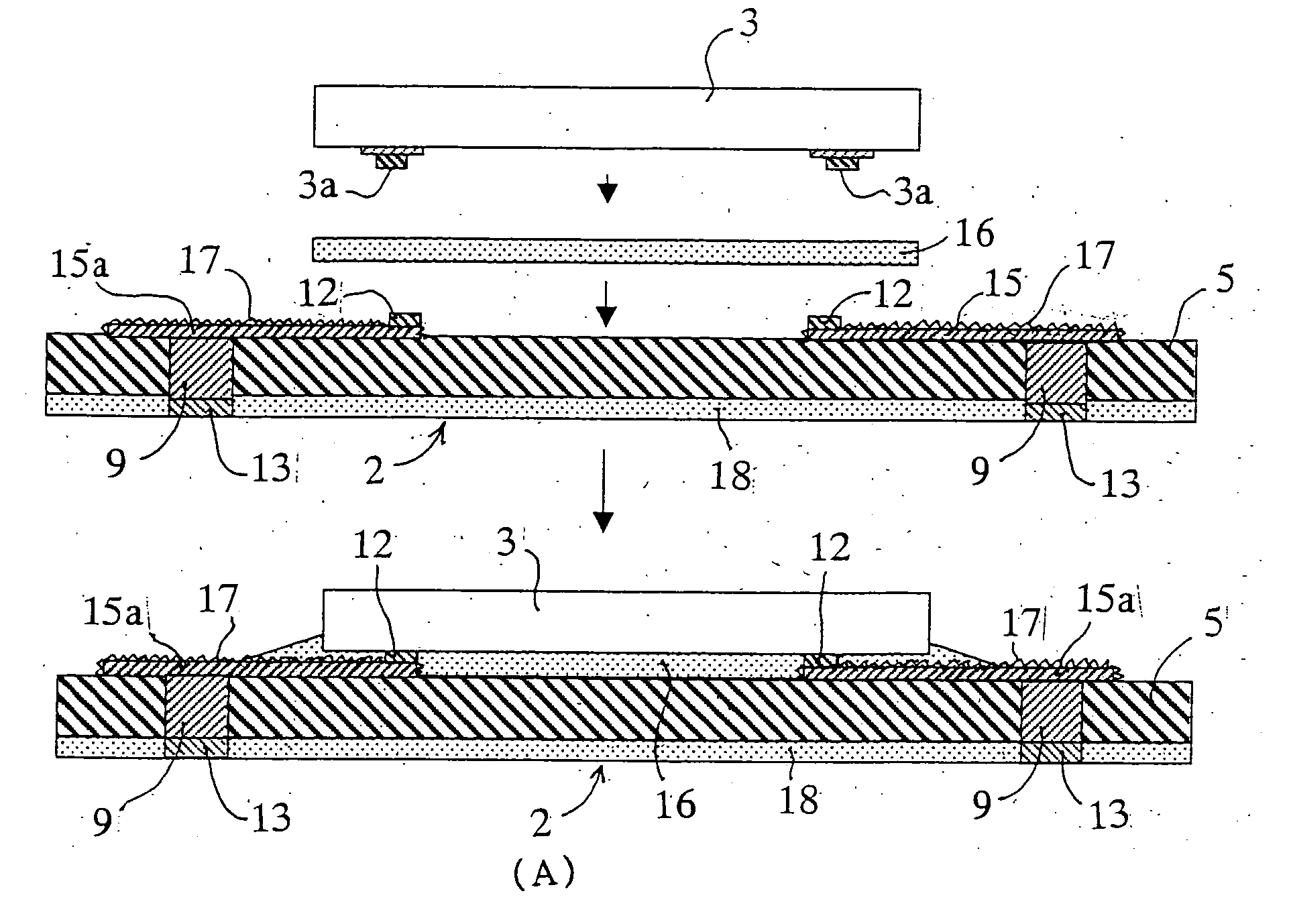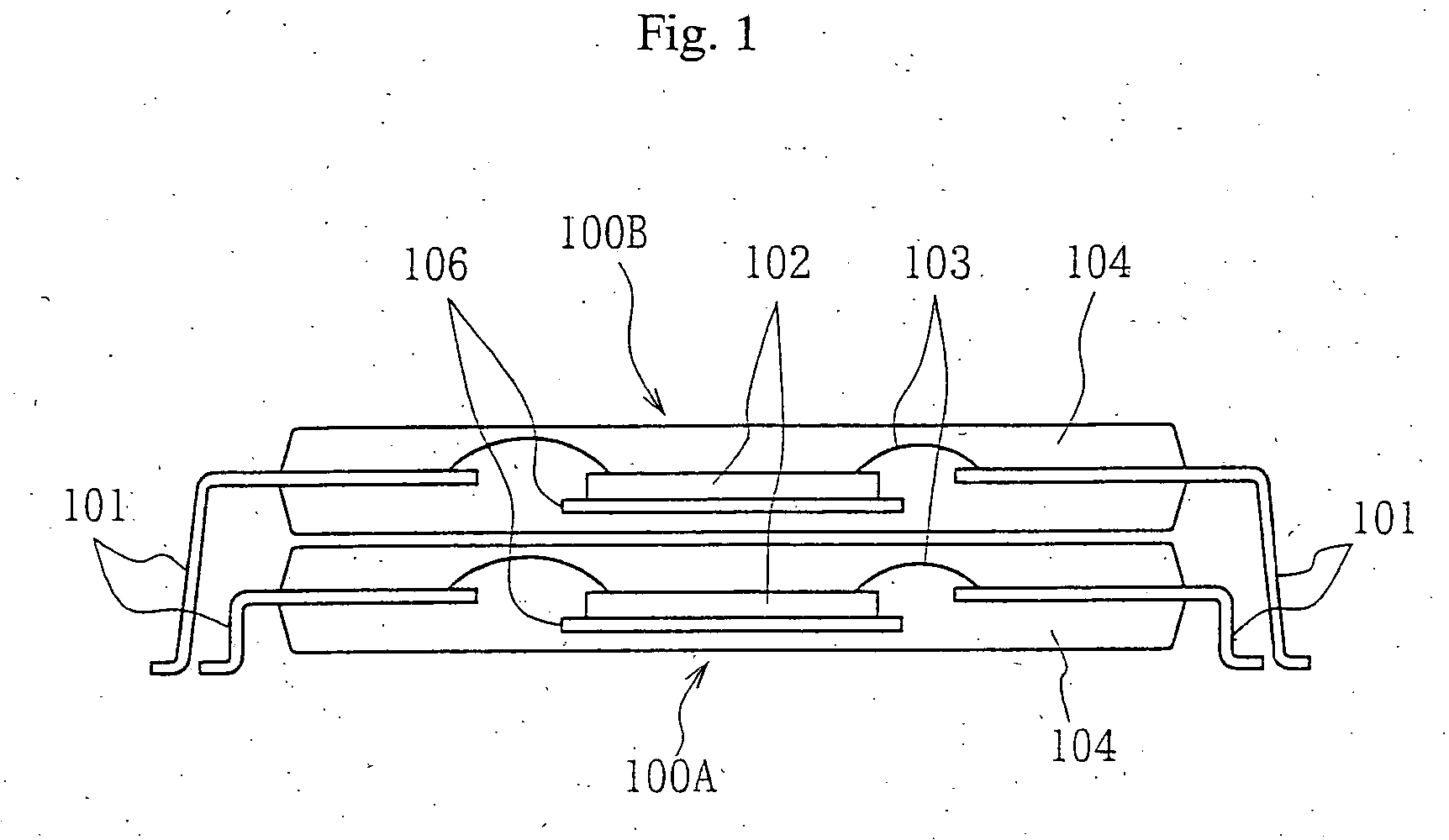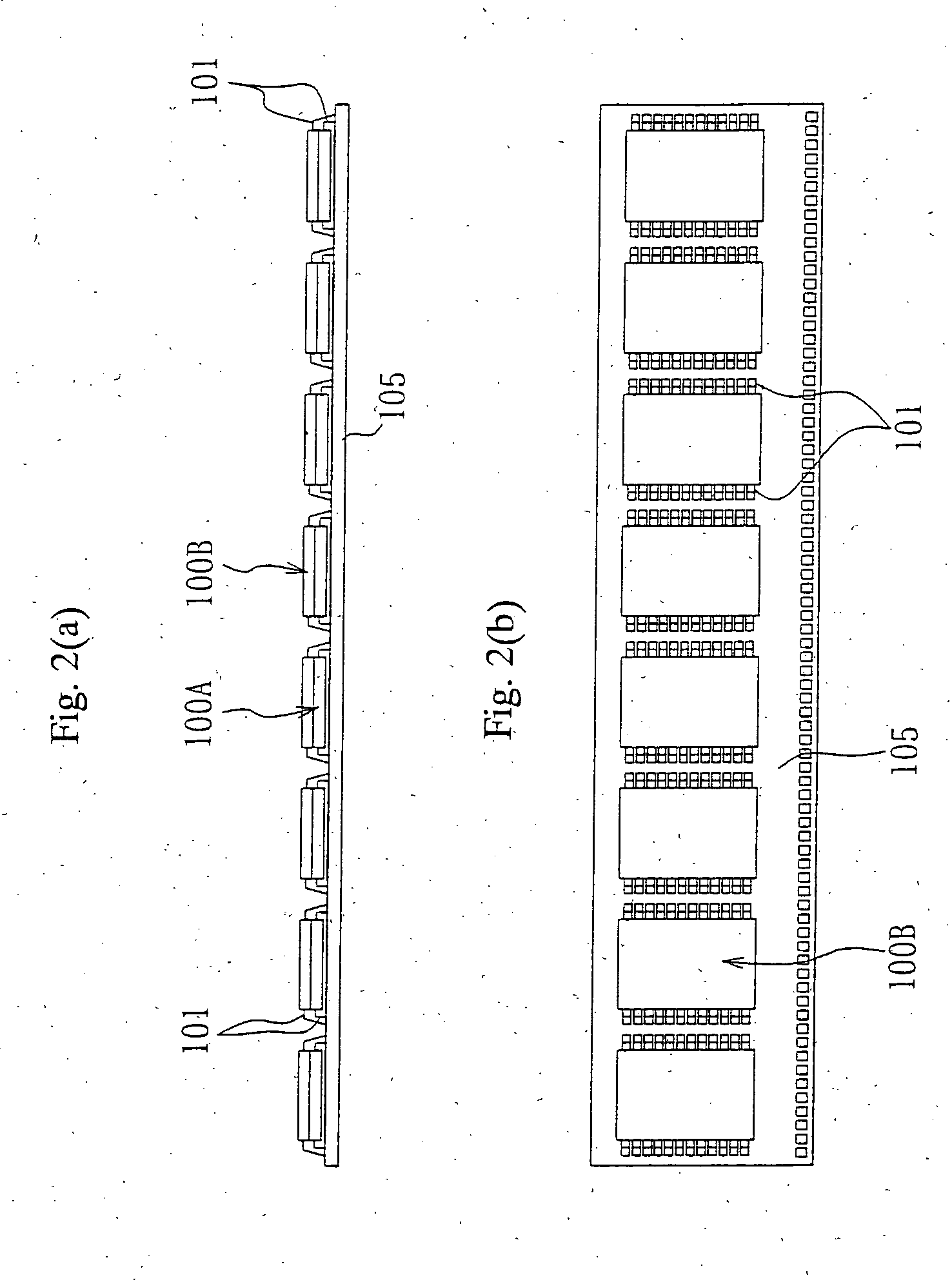Semiconductor chip mounting wiring board, manufacturing method for same, and semiconductor module
- Summary
- Abstract
- Description
- Claims
- Application Information
AI Technical Summary
Benefits of technology
Problems solved by technology
Method used
Image
Examples
embodiment 1
[0264] (1) A glass fabric was impregnated with epoxy resin to prepare a B-stage prepreg. A copper foil was attached to the prepreg. They were pressed while being heated to prepare a one-side copper-clad laminate 4. This one-side copper-clad laminate 4 was used as the starting material for the semiconductor chip mounting wiring board 2. The insulating resin substrate 5 was 75 μm thick and copper foil 12 was 12 μm thick (as shown in FIG. 3(a)).
[0265] (2) A PET film 7 having a thickness of 22 μm was attached to the side of the insulating resin substrate 5 opposite to the side to which the copper foil 6 was attached. The PET film 7 comprised an adhesive layer of 10 μm in thickness and PET film base of 12 μm in thickness.
[0266] (3) Next, a pulse oscillation type carbon dioxide gas laser machine was used to irradiate a laser beam from above the PET film 7 to the insulating resin substrate 5 under the following laser beam machining conditions to form the opening 8 in which the viahole wa...
embodiment 2
[0290] (1) By conducting processes as in the steps (1) to (9) for the embodiment 1, a mounting wiring board 2 having a semiconductor chip 3 mounted thereon was prepared (as shown in FIGS. 3(a) to 4(e)).
[0291] (2) Next, a glass fabric was impregnated with epoxy resin. The glass fabric thus processed was heated to a semi-hardened state, and then shaped to be a plate which was a prepreg of 150 μm in thickness. The prepreg was used as the insulating resin substrate 21 for the interlayer member 20 (as shown in FIG. 8(a)).
[0292] A protective film 23 of 23 μm in thickness was attached to either side of the insulating resin substrate 21 formed from the prepreg (as shown in FIG. 8(b)). A pulse oscillation type carbon dioxide gas laser machine was used to irradiate a laser beam from below the insulating resin substrate 21 under the following conditions to form a truncated-conical through-hole 24 having a diameter of 250 μm at the lower opening and a diameter of 100 μm at the upper opening (...
embodiment 3
[0299] (1) By conducting processes as in the steps (1) to (9) for the embodiment 1, a semiconductor chip mounting wiring board 2 was prepared.
[0300] (2) Next, as the starting material for the interlayer member 20, an insulating resin substrate 21 formed from a glass fabric-epoxy resin plate was used (as shown in FIG. 10(a)).
[0301] First, an adhesive layer 22 of 15 μm in thickness was formed on either side of the insulating resin substrate 21 of 130 μm in thickness, a protective film 23 of 23 μm in thickness was additionally attached to the adhesive layer 22 (as shown in FIG. 10(b)), and a pulse oscillation type carbon dioxide gas laser beam machine was used to irradiate a laser beam to the insulating resin substrate 21 from below under the following laser beam machining conditions to form a stepped cylindrical through-holes 24 through the protective film 23, adhesive layer 22 and insulating resin substrate 21.
[0302] The through-hole 24 consisted of upper and lower portions. The l...
PUM
| Property | Measurement | Unit |
|---|---|---|
| Melting point | aaaaa | aaaaa |
| Temperature | aaaaa | aaaaa |
| Fraction | aaaaa | aaaaa |
Abstract
Description
Claims
Application Information
 Login to View More
Login to View More - R&D
- Intellectual Property
- Life Sciences
- Materials
- Tech Scout
- Unparalleled Data Quality
- Higher Quality Content
- 60% Fewer Hallucinations
Browse by: Latest US Patents, China's latest patents, Technical Efficacy Thesaurus, Application Domain, Technology Topic, Popular Technical Reports.
© 2025 PatSnap. All rights reserved.Legal|Privacy policy|Modern Slavery Act Transparency Statement|Sitemap|About US| Contact US: help@patsnap.com



